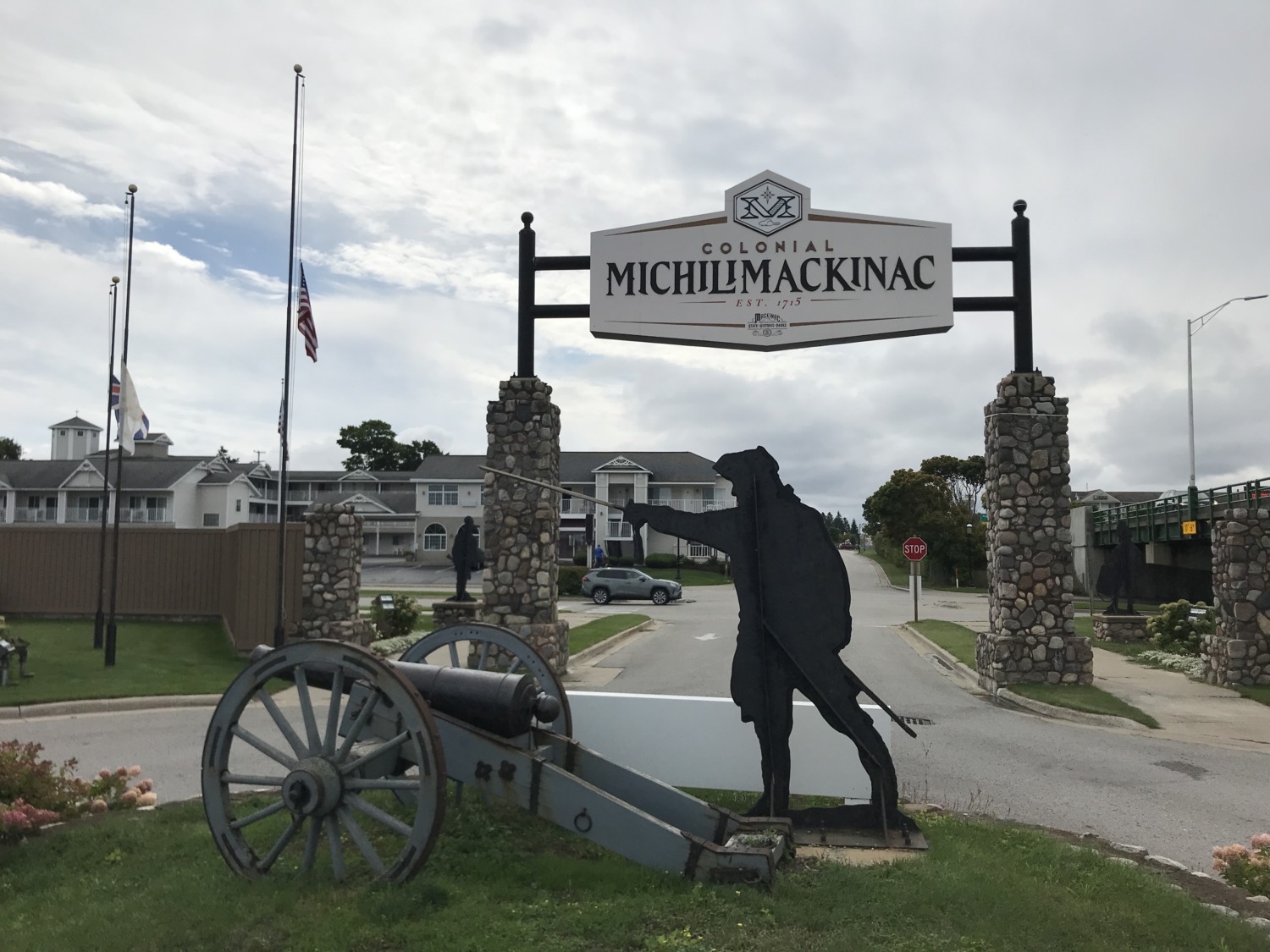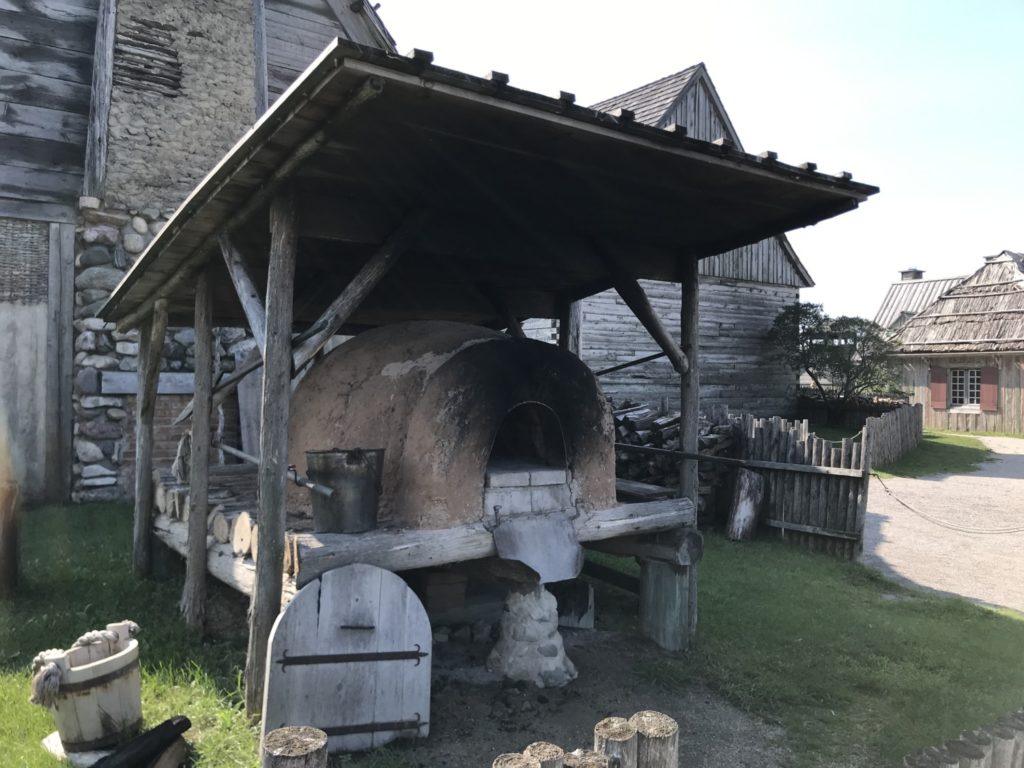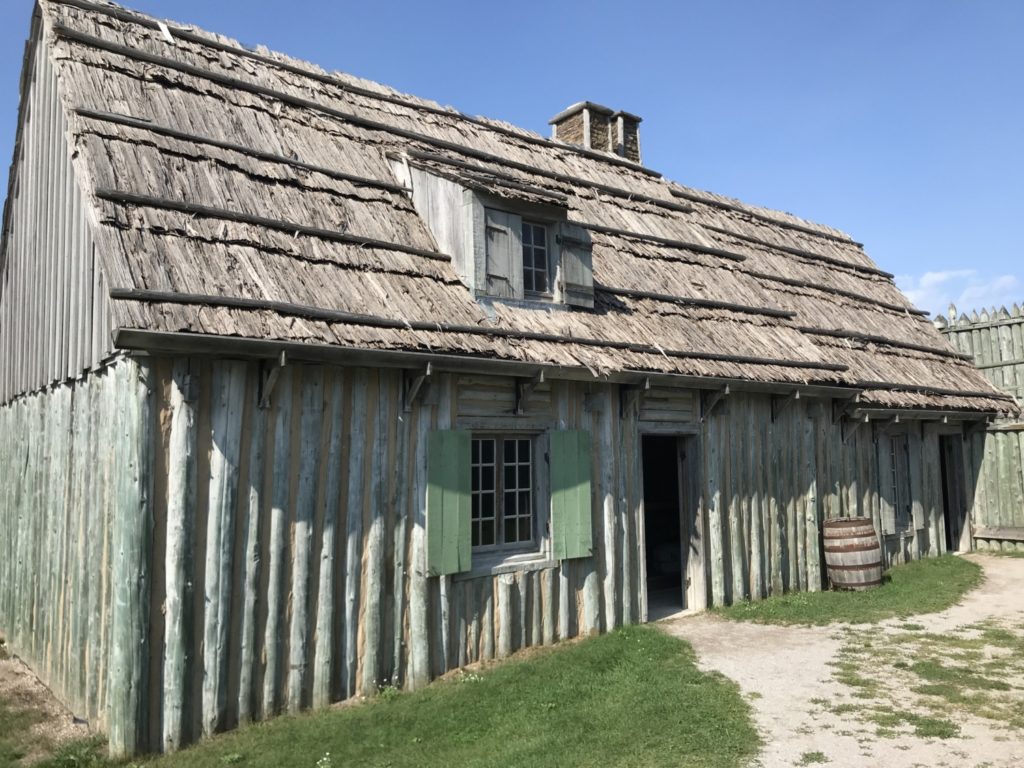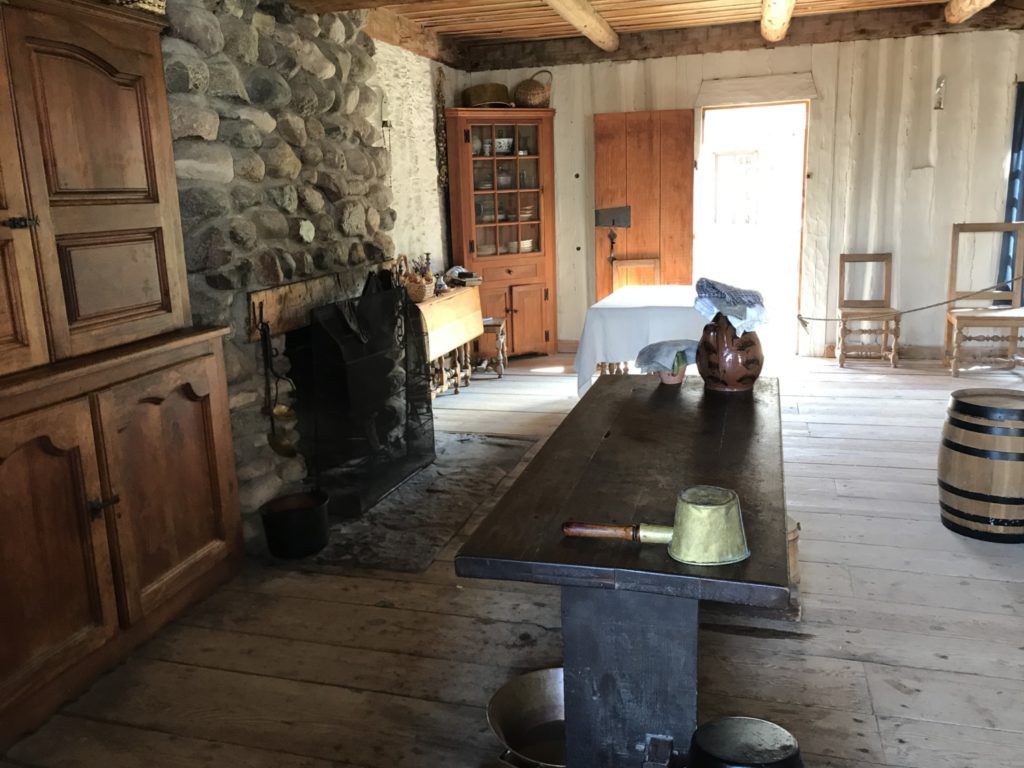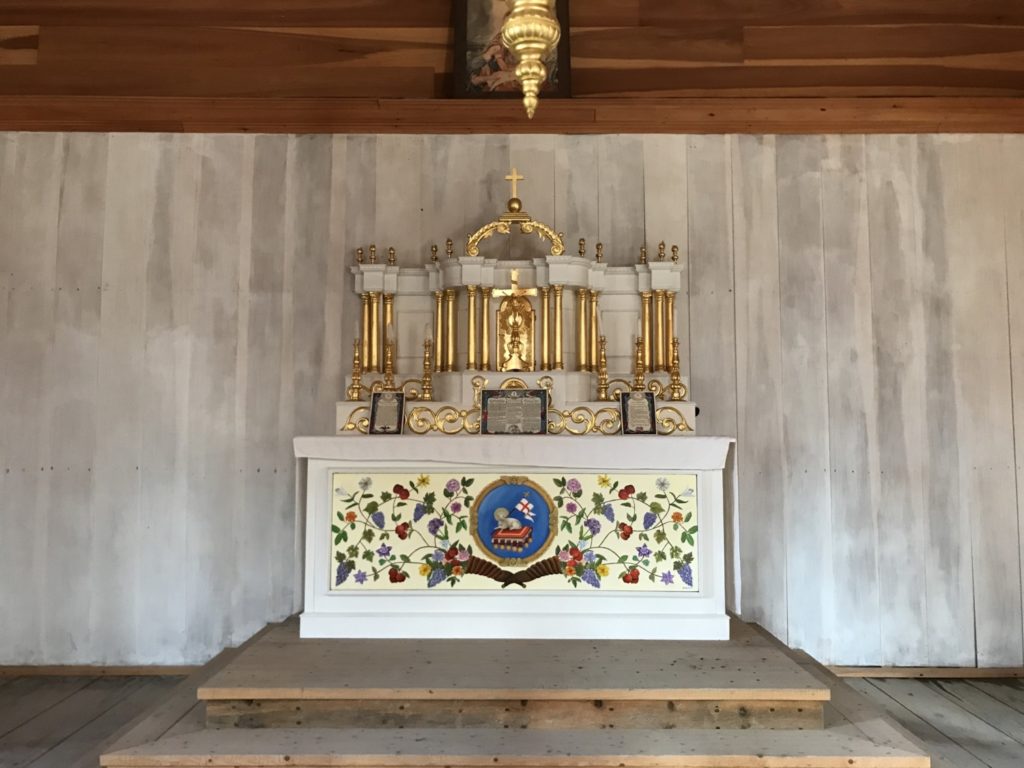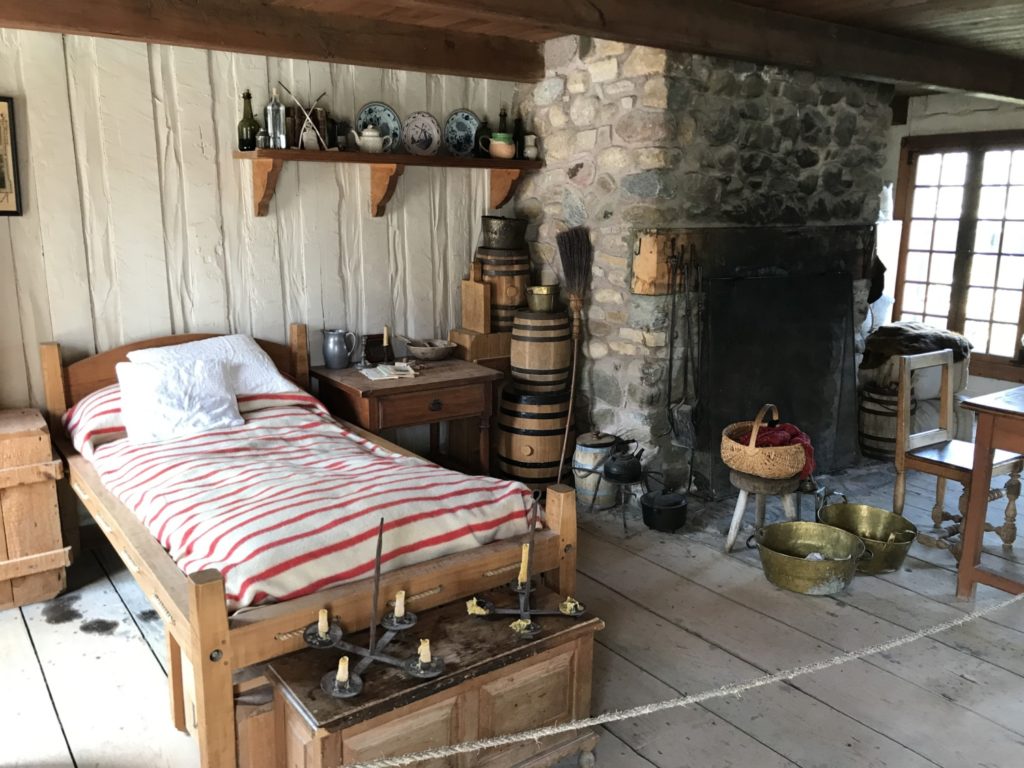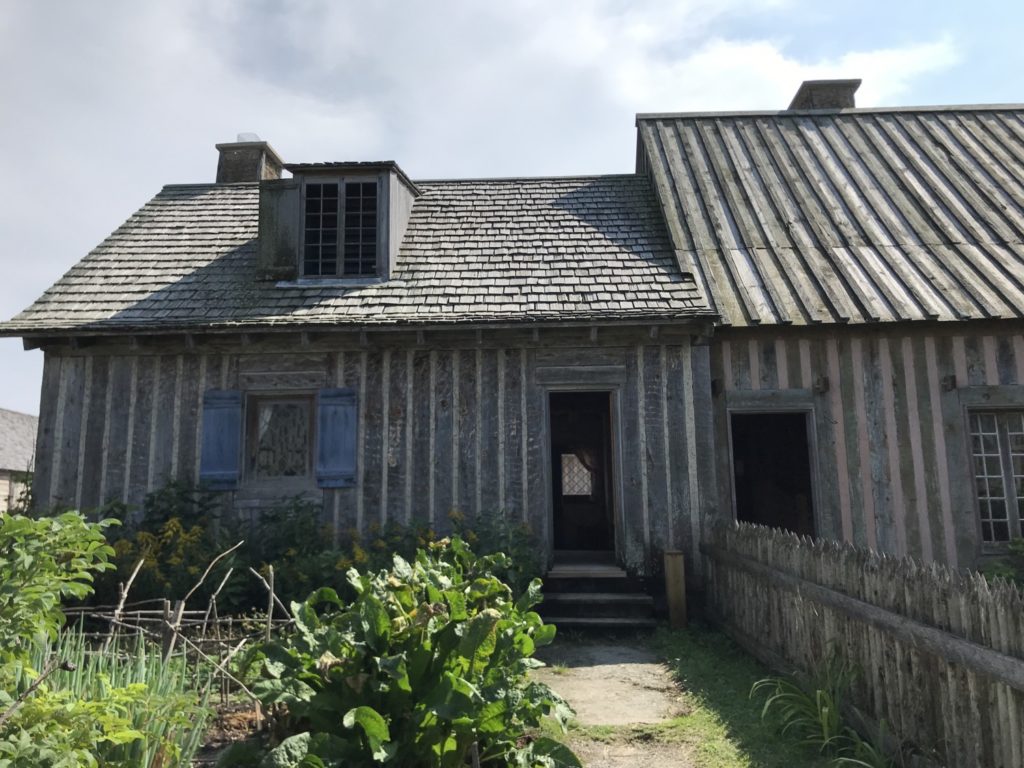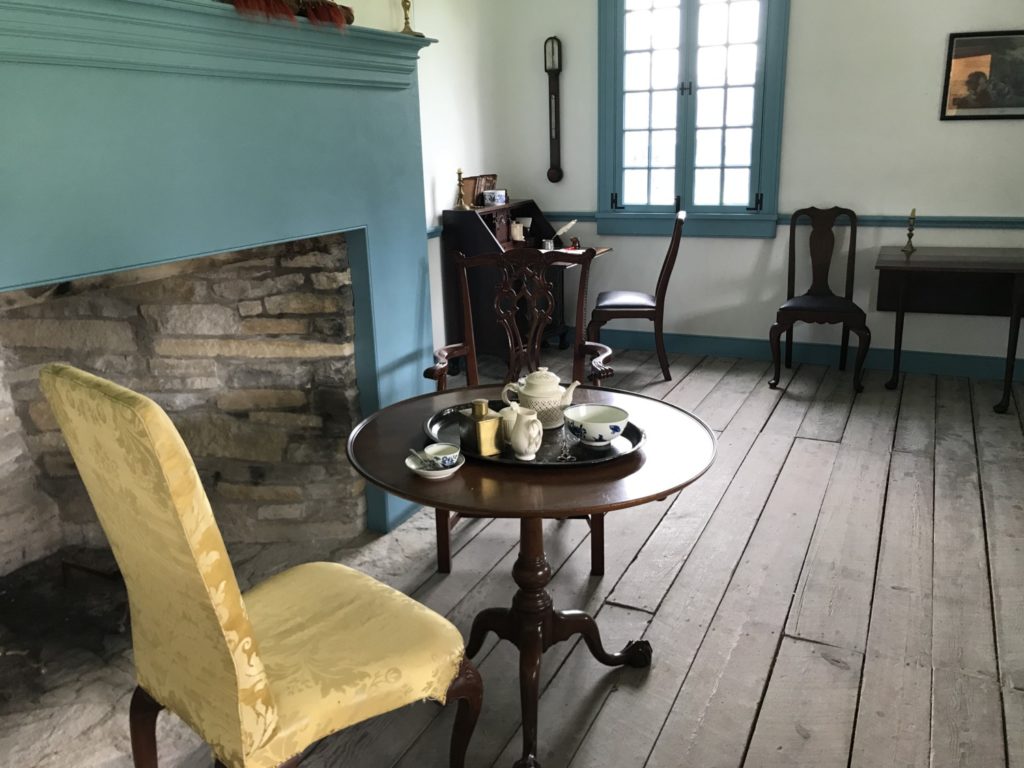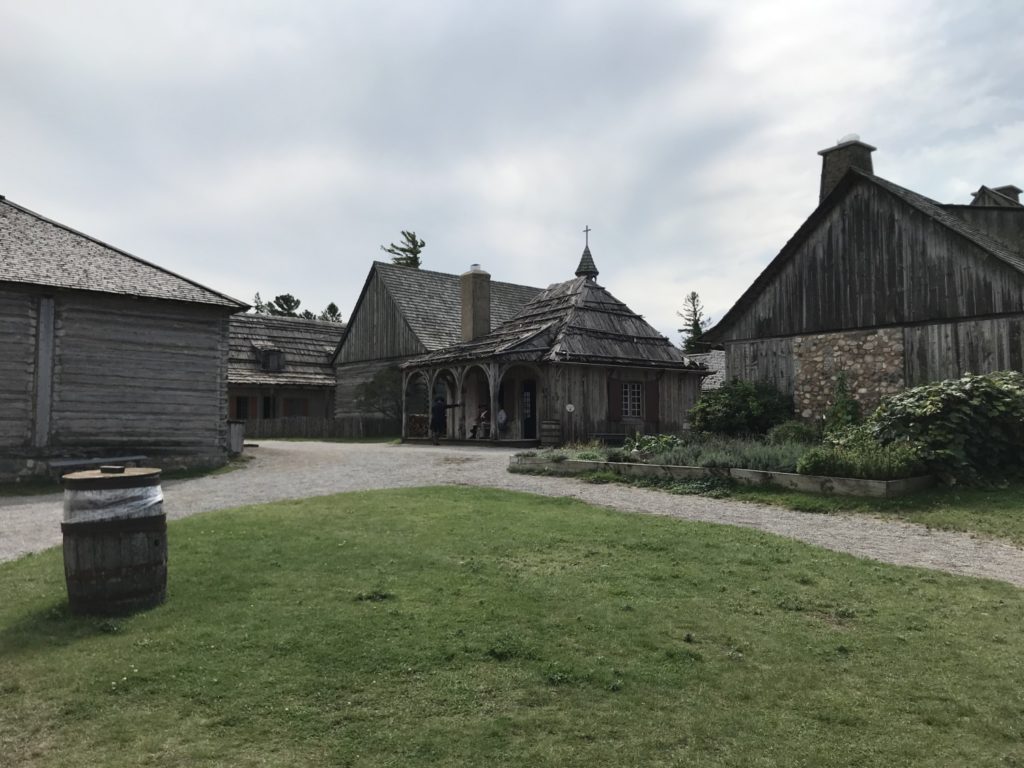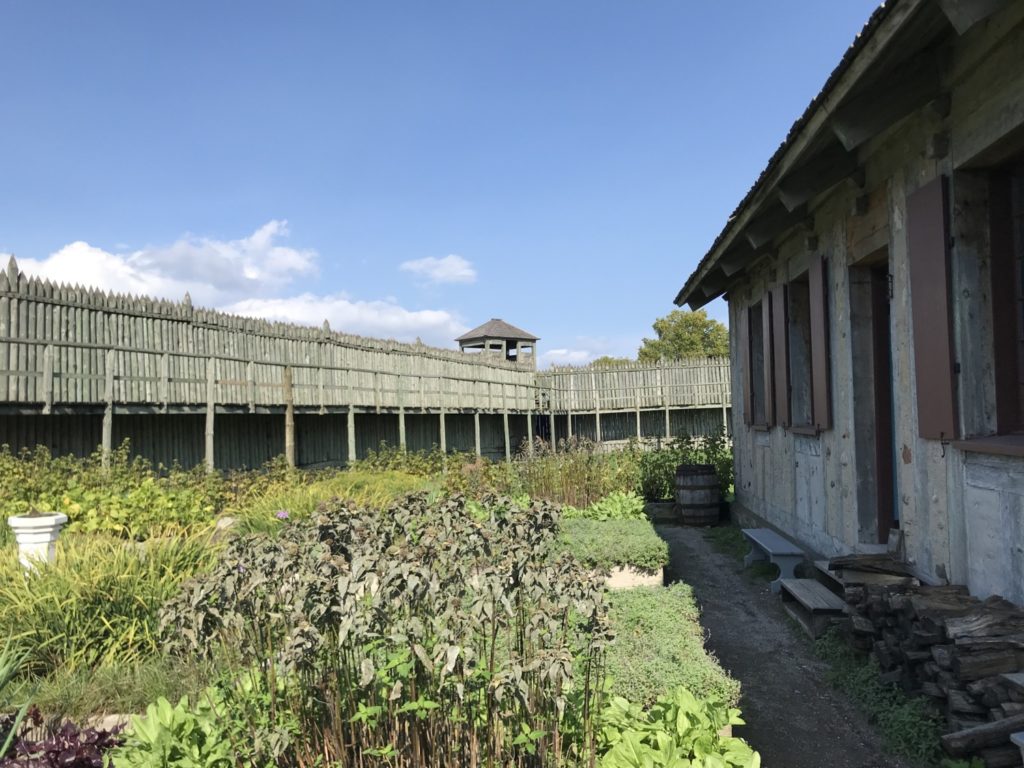The day after our visit to Big Sable Point Lighthouse, we headed northeast to Colonial Michilimackinac in Mackinaw City. All of the mackinacs in this area are a little confusing. There is Mackinaw City, Mackinac Island, Fort Mackinac, Old Mackinac Lighthouse, Mackinac Bridge, and Colonial Michilimackinac. All of these place names refer to the area around the Straits of Mackinac. It was our intention to explore all of these places so that we could really understand all the mackinacs. We started with Colonial Michilimackinac because it is the first one you come to from the south. Mackinac Bridge is a toll bridge and we didn’t want to cross it again if we didn’t have to.
Colonial Michilimackinac was a surprise and delight. So many places up north shut down their summer programming after Labor Day. We were delighted to find that Colonial Michilimackinac kept its full programming going through the first week in October. Consequently there were tours, living history programs, and cannon firing while we were there.
Before we left Orchard Beach State Park, we arranged to meet the Shaws at Colonial Michilimackinac at 1 p.m. We figured this would let us decide when we needed to leave and travel at our own speed. We could also stop along the way if needed. Tom and I ended up leaving about an hour after Eric and Sandy because we don’t stop as often. They arrived at Colonial Michilimackinac shortly before we did. We were pleased to find a large parking lot underneath the start of the Mackinac Bridge. I didn’t think our RV was short until the Shaws with their truck and trailer parked next to us. They would have been small next to our old RV and truck.
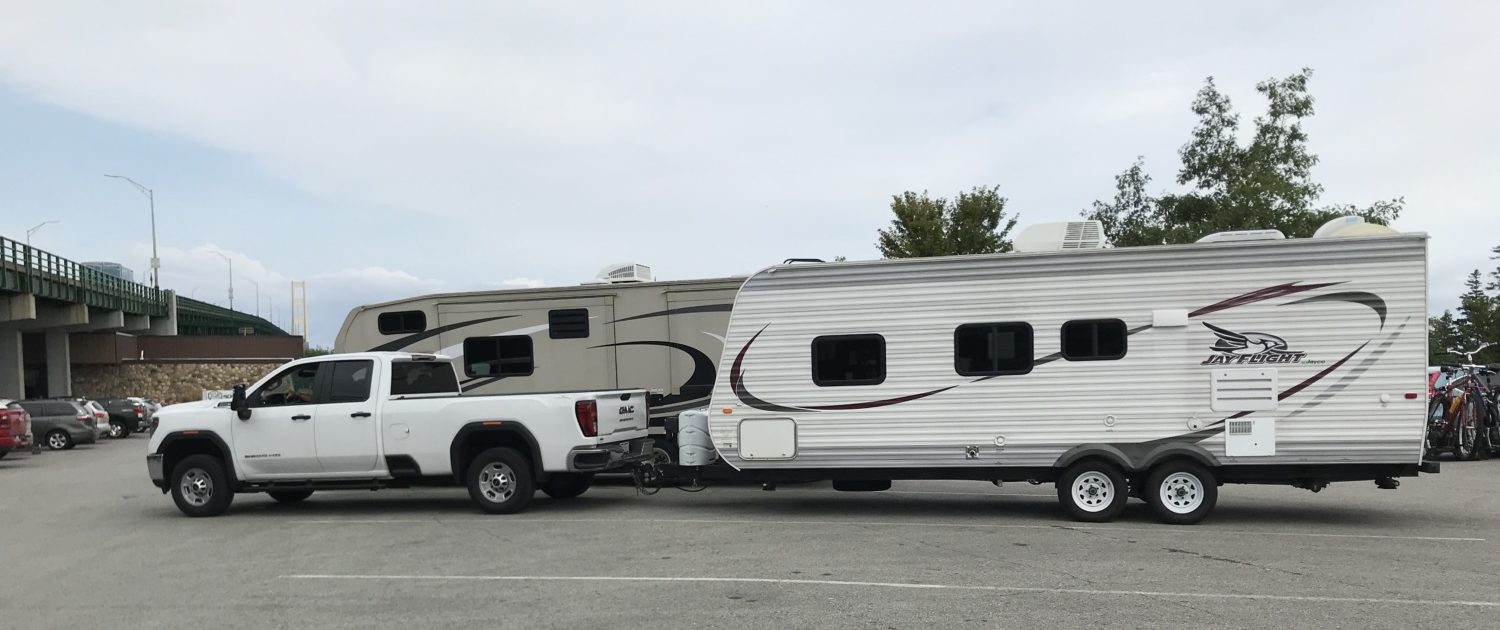
The original fort at Michilimackinac was built by French soldiers in 1715 in response to King William’s War. They chose the site because it was next to an Odawa village and Catholic mission run by Father Marest. Over time the fort was expanded to encompass a village of French colonists. The French used the post as a base for sorties against the English, the Fox and Chickasaw Indians, and the Americans. In 1755, French soldiers and Native American warriors traveled from Michilimackinac to Fort Duquesne to defeat General Braddock.
The British took control of Michilimackinac in 1761 following the French and Indian War. New France was ceded to the British. The fort was captured and occupied by the Ojibwa during Pontiac’s Uprising in 1763. After the American Revolution, the fort was moved to Mackinac Island, which was still considered British territory. Once the fort was moved, the town around the fort was abandoned and the area was covered with sand.
Eventually, in the 1850’s, Americans started moving into the area and the town of Mackinaw City was established. In 1909 the former site of Michilimackinac became a state park. Following archaeological work in the 1950’s and 1960’s, the fort was reconstructed based on the archaeological evidence.
There are 16 buildings in Colonial Michilimackinac and all are furnished with period settings or themed exhibits. Several of the buildings have special exhibits such as:
- France at Mackinac, 1670-1760, explores Michilimackinac as it was under the French regime.
- Treasures from the Sand, an underground exhibit exploring the process of historical archaeology.
- Redcoats on the Frontier, describing the life of the British soldier, including a new interactive space that will allow visitors to step back in time to experience the lives of British soldiers in the 1770s.
- Powder Magazine and Firearms on the Frontier, a subterranean exhibit describing the preserved ruins of this military structure.
- Commanding Officer’s House, showcasing the life of Michilimackinac’s commanding officer.
There are also two movies in the fort. The first is a 15 minute movie which describes the history of the fort. The second movie presents the Ojibwa assault and capture of the fort during Pontiac’s Uprising. Costumed interpreters move around the grounds, talking to visitors and answering questions. We found one in the Commandant’s garden and another just leaving the kitchen. A couple of soldiers were gathered on the porch of the barracks.
We went into the Visitors Center first, which is a short distance from the entrance to the fort. We were concerned about Bob Walliser being able to walk to the fort and enjoy the visit. The woman at the desk told us there was a mobility scooter provided at no charge. This made the visit much more pleasant for Bob as he tooled around and enjoyed looking at everything. He could get up and walk into the buildings, but he wasn’t exhausted from walking to and from the fort.

We considered buying an Family Heritage pass, which would let us get into all six of the Mackinac State Historic Park sites for $85. Instead, the woman at the desk suggested buying a membership in the Mackinac Association Friends. That annual pass cost $75 and would get two people into the same four sites. We could also pay 1/2 price for Bob and get a 20% discount at any of the gift shops. We took that deal because we were planning on going to all six sites and it would save us some money.
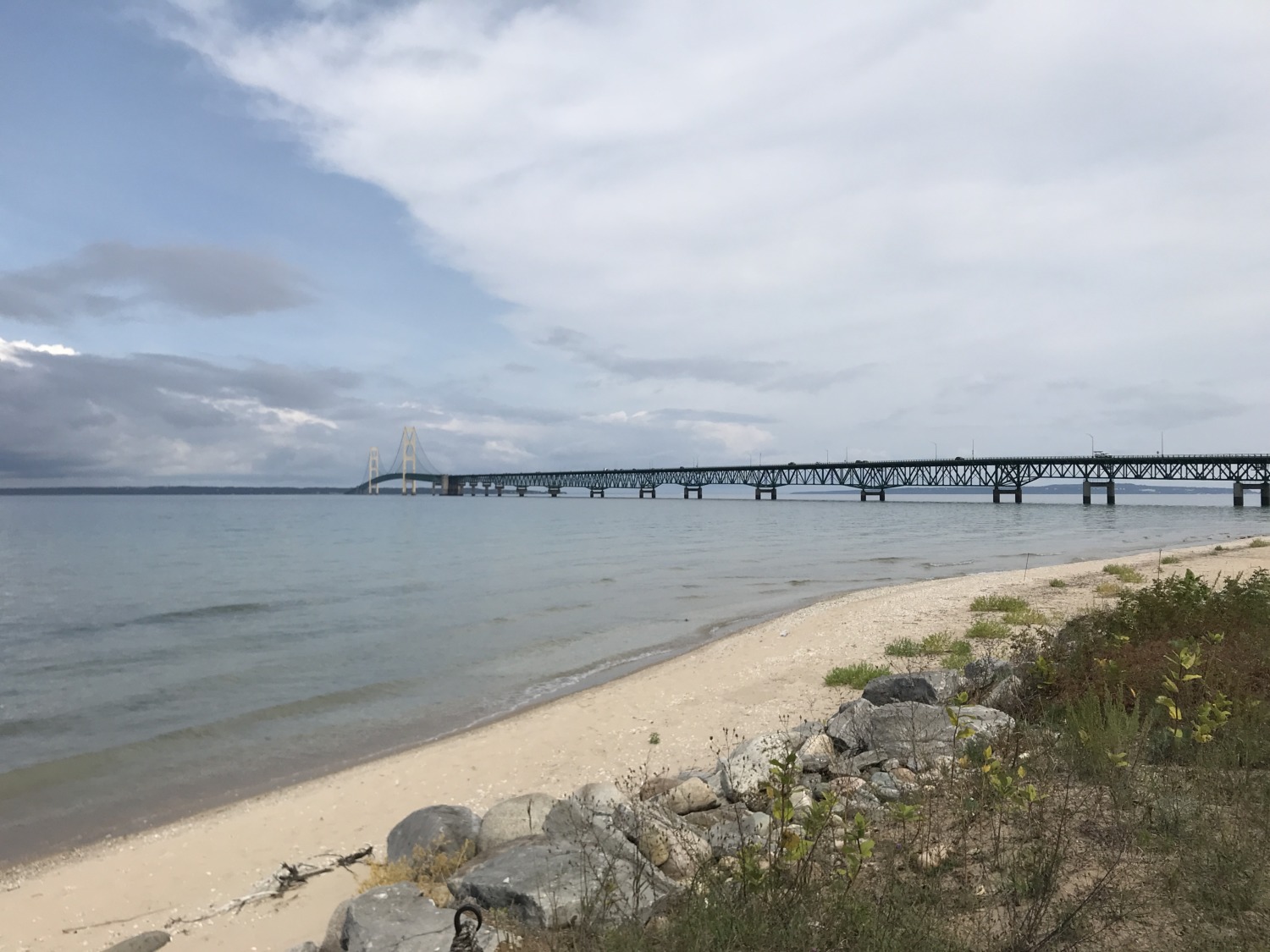
After filling out the appropriate paperwork and paying our membership fee, we headed into Colonial Michilimackinac. The first thing we noticed was the great views of Mackinac Bridge. The second thing was the children waving from the guard tower of the fort. We waved back and went through the front entrance.
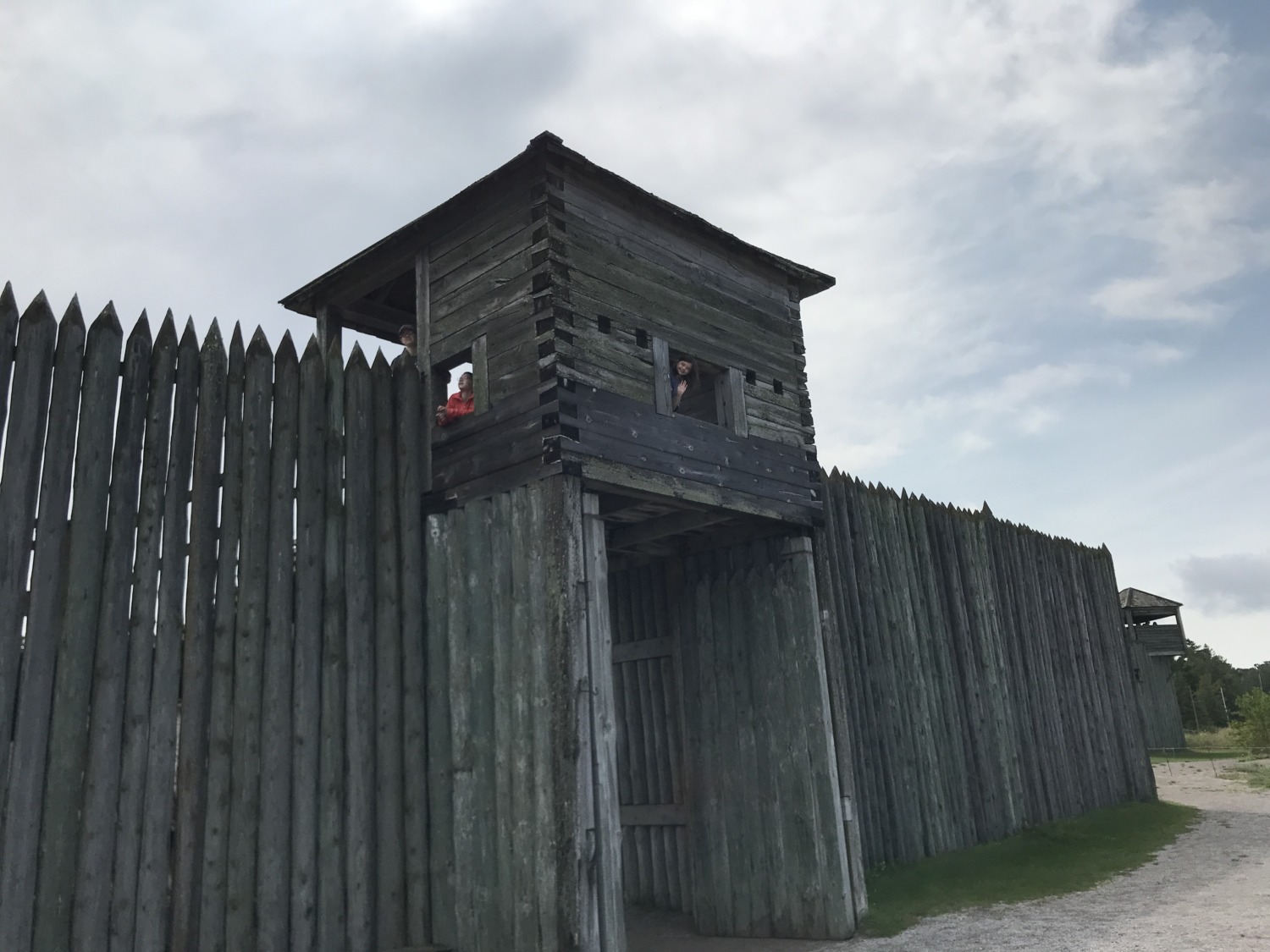
At first glance, Colonial Michilimackinac seems small, but it expanded as we explored. We looked in all the buildings and watched both movies. We also talked to the living history interpreters and spent time with the special exhibits. At 3 p.m. we watched the cannon firing demonstration. Tom especially enjoyed talking to the soldiers and said he could see himself volunteering there in the summer. I was particularly fascinated by the exhibit in the Powder Magazine. When the British abandoned the fort in 1781, they burned anything they didn’t take. The Powder Magazine was one of the buildings they burned. The collapsed roof and being covered by drifting sand preserved the posts that formed the Powder Magazine and they were perfectly preserved when the archaeologists uncovered them.
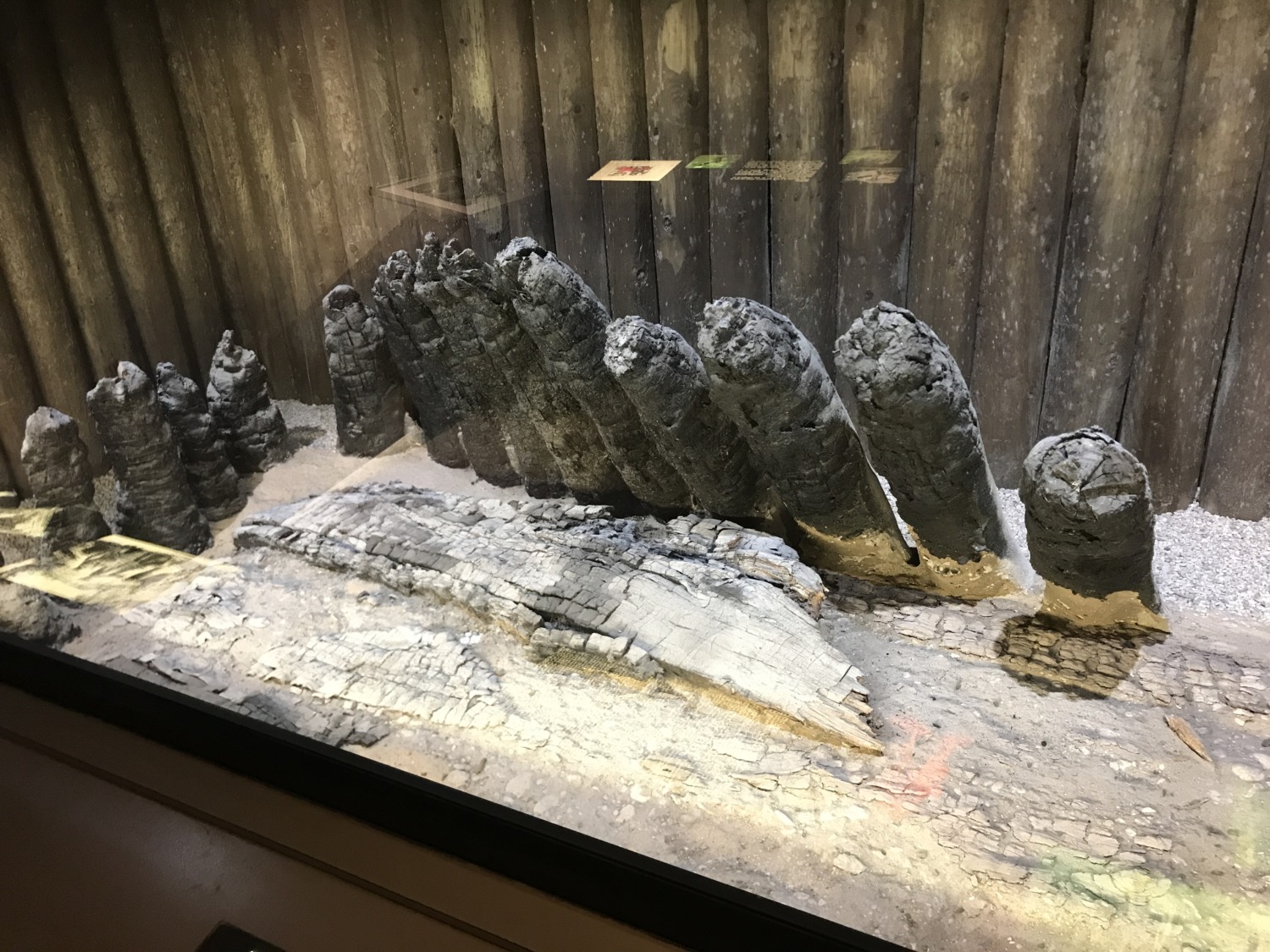
We stayed at Colonial Michilimackinac several hours and probably could have stayed even longer or enjoyed a visit on another day. Sandy bought a magnet and I found a hearth cookbook published by Colonial Michilimackinac. It was a very interesting place to visit and we would certainly go there again.

